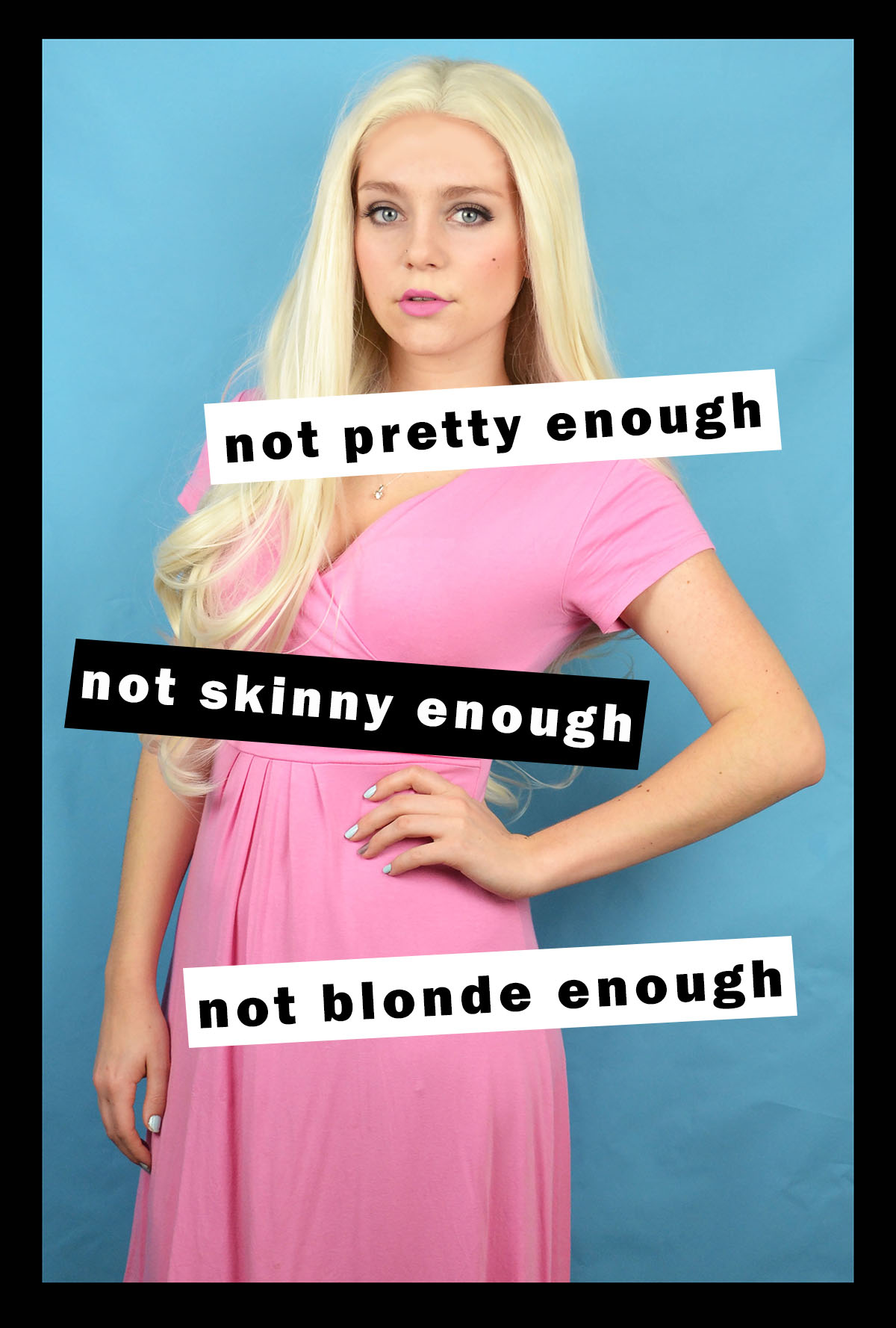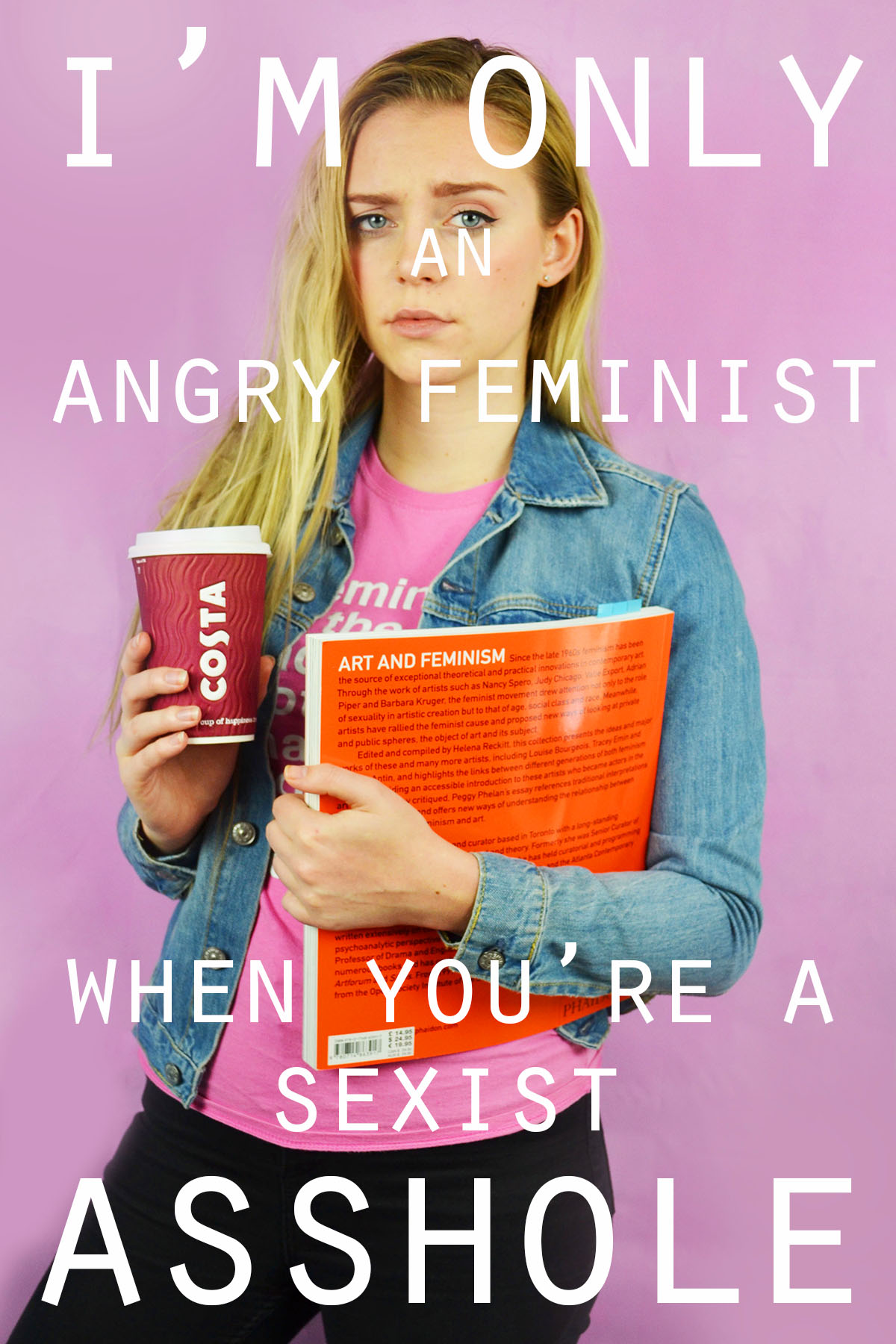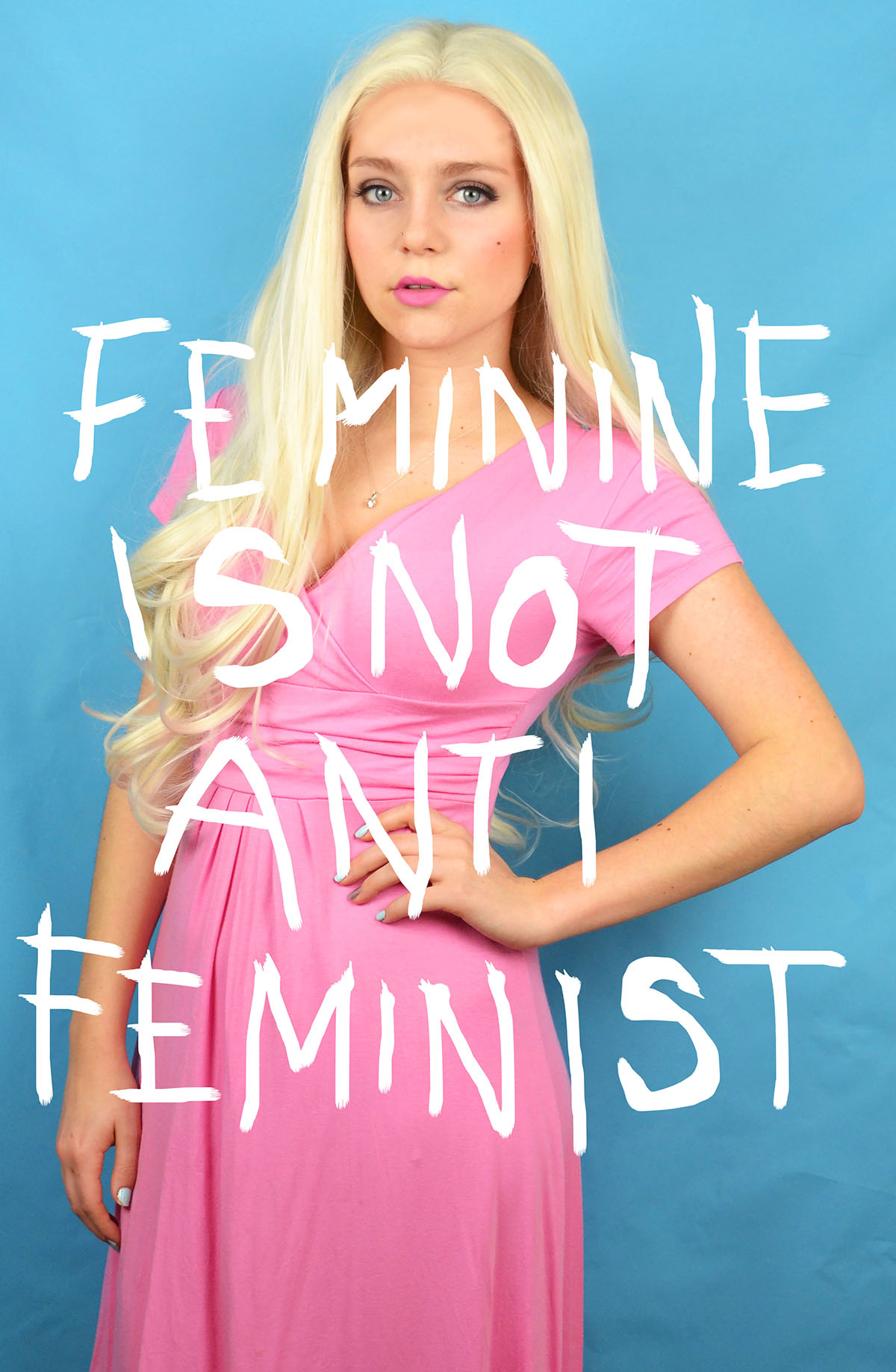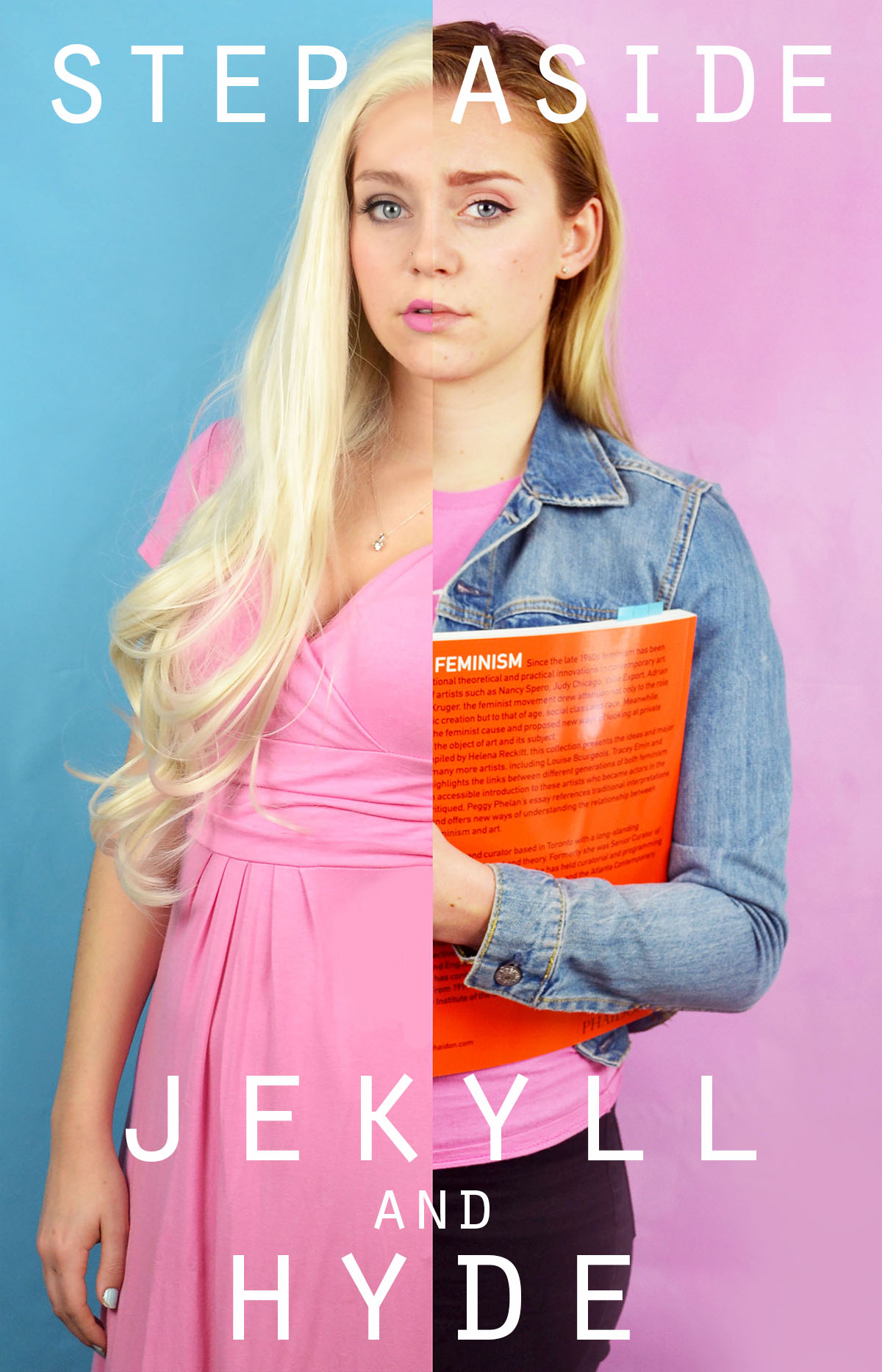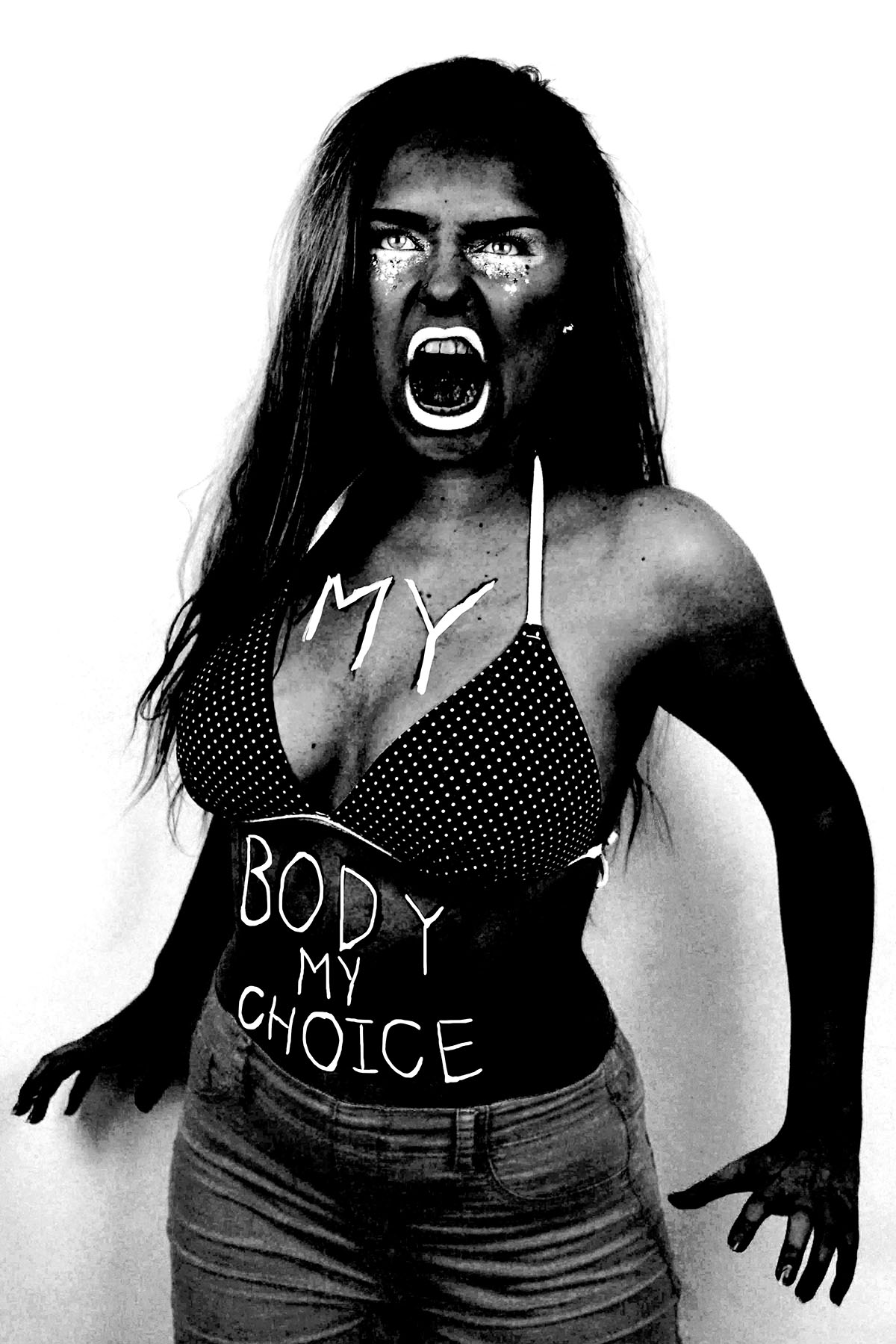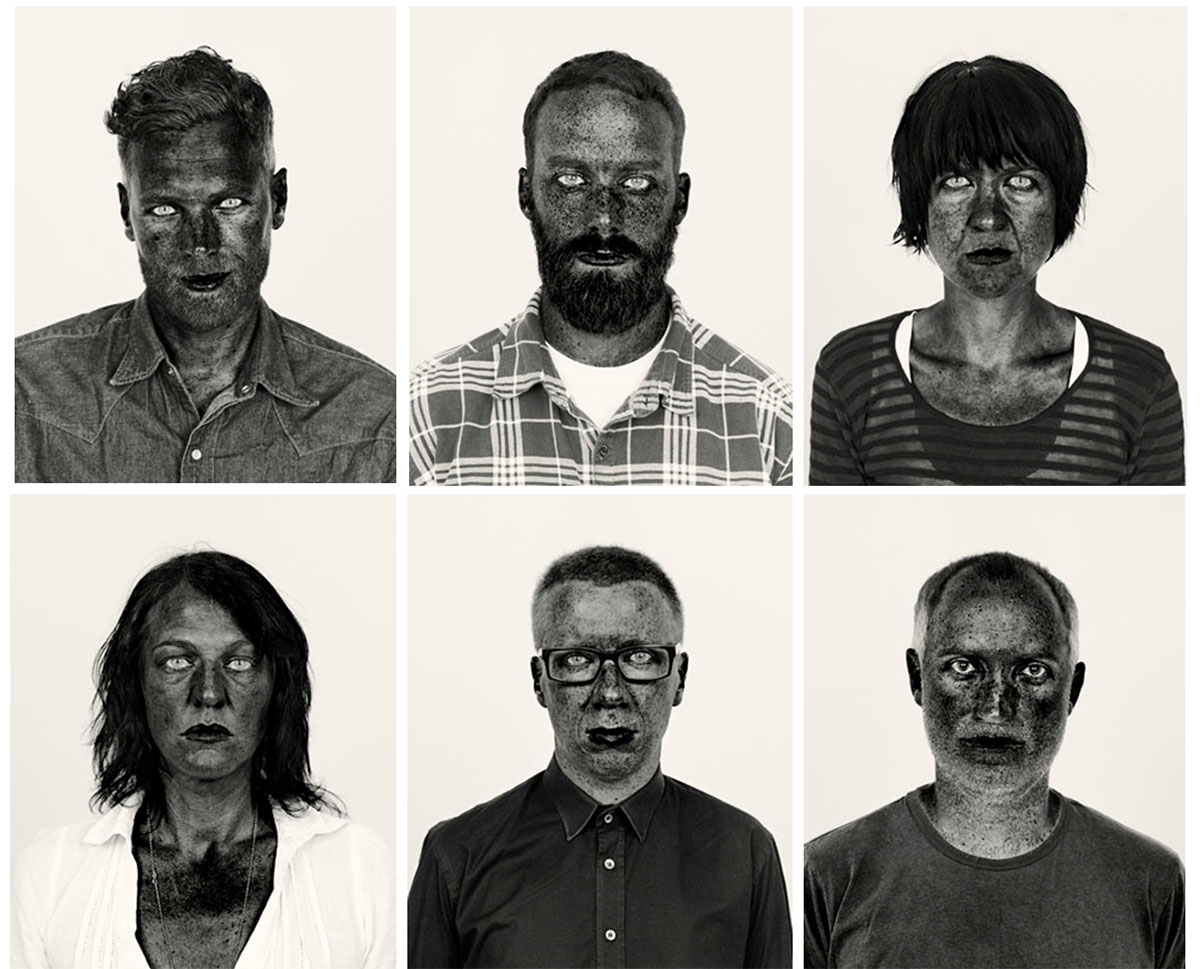These are three images I selected out of the original, only slightly retouched images (without any heavy photoshop of the addition of text) I decided to present these image as a sort of triptych. I plan to separately mount these images on white window mounts but display them in a row of three as above. I chose these three because the two more feminine images with the pink back drop act as the bread in my angry feminist (image with the blue backdrop) sandwich. The colour of the images work well together because the images with the pink backgrounds have a large are of blue to tie them with the image in the centre, the beauty queen photograph has the blue of the dress which is mirrored quite nicely a similar blue of the fluffy backpack in the art student photo. I also decided to place the feminine images on the outside because I am more outwardly feminine than I am masculine, but that does in no way diminish the fact that I am a feminist, which is why the dramatic angry feminist portrait is placed in the middle. These images were mainly inspired by studio self-portraits of Yasumasa Morimura.
I selected these images to be presented together as a triptych in a white window mount. I chose these images to act as part of a triptych because they all had blue backgrounds and the text included in the images stems from the theme of feminism and stereotypes. Similarly to the three images above at the top of the post, I placed my two more masculine stereotypes on the outsides of the triptych and my more feminine stereotype in the centre. My single feminine figure in this triptych is also supported by the phrase “feminine is not anti-feminist” breaking the stereotype that feminist cannot present themselves as stereotypically feminine or conform to traditional gender roles. My art student image features the phrase “Her work critic, and yet her best advocate” which is a phrase that is personal to me as I can be both overly confident and overly critical about my own work. The text also ties in with the stereotype of a pretentious art student who is constantly at war with whether their work is worthless or genius. The text in my angry feminist image, “We tried being polite, but men only respond to violence” is a phrase that combats the negative connotations of the angry feminist stereotype. As, historically speaking, asking nicely to be freed or given equal rights as a oppressed group of people doesn’t work. These images were inspired by Gillian Wearing photographic project “Signs that Say What You Want Them To Say and Not Signs that Say What Someone Else Wants You To Say” as I feel that these are often phrases that are unspoken and the phrase included in the art student portrait is something that I have struggled to put into words. If Wearing had included me as one of her subjects in the project, I’m sure that my sign would have said something of that nature.
I chose to present these high contrast images as a triptych because I felt that they were more powerful when presented as a group. I plan to mount these on black window mount to create even more contrast between the black of the window mount and the white of the print. I chose to place the images in the order that I have shown above because the centre image has a strip of lighter hair and has a nice curve in terms of its overall pose and composition. With these images I wanted to create a sense of drama and intensity, so the viewer feels as if the figures could jump out of the window mount and attack at any moment. These images were inspired by Pieter Hugo photographic series, “There’s a place in hell for me and my friends” I found the concept of hyper pigmentation in all skin tones and within many races and ethnicities very intriguing. However, I simply took inspiration from the aesthetic nature rather than the political undertones of Hugo’s work.

I selected this image as a final because I feel that my continuation with an analog approach was very successful. I plan to mount this print on black sugar paper, leaving a small border of white from the original print. I will then see how the image looks but I think I will mount it in a black window mount to give the piece a polished and finished look. I included this image even though there are some others that are similar because I feel that the colour relationship between the pink and blue and black and white is very apparent and successful with this composition. The word “beauty” which has positive connotations is presented in black text with a dominant white background and the word “bitch” which has negative connotations is presented in white text with a dominant black background. There is also a very strong sense of divide between the two stereotypes due to them being separate bodies also separated by the rip between the prints. This image was inspired by the research I did on ripped movie posters such as “The Shining”, the burn book from “Mean Girls” and the typical Hollywood ransom notes.

I selected this image as a final, although it is rather similar to the final above because in this image the two figure have become one, the physical prints are combined. I think that there is a greater sense of integrity in this image because everything has been done manually and by hand. The text in this image alternates between white letters with black background and black letters with white backgrounds. This image has already been mounted on to black sugar paper but I also plan to place it in a black window mount. This image was also inspired by film posters, ransom notes and the burn book from “Mean Girls” I feel that this image displays all of my inspirations in a stylized and sophisticated way.

I selected this image as a final outcome, although similar to the previous two because I think that the digital combination of the two images and text is more polished. I the digital combination of the images I was able to edit out the fingers of the second hand in the blonde photograph, which looked strange in the very centre of the image. I was also able to match up the faces more accurately and adjust the brightness, contrast and colour channels to make the skin tones more similar for a more seamless split. For the text in this image I took inspiration from the work of Barbara Kruger and kept the full words intact rather than separating them into individual letters. I placed the text onto label like backgrounds of the opposite colour, white on black and vice versa. I also placed the words at jaunty angles, which is a common feature of Kruger’s work. I also decided to keep the word Feminism on my “Art and Feminism” book between the additional “and” and “the” as a not so subtle subtext. I originally planned to edit the word out, but after consideration I decided to keep it.

I selected this image as a final because I feel that it comments of the beauty standards in western society that women are held to. The text also comments on how beautiful who appear outwardly confident are often just as insecure as everyone else on the inside. When I was blonde I also felt that I was held to higher standards in terms of appearance because when one has blonde hair and wears no make up and comfy clothes they often look very unpolished. If I had worn the same wig with the outfit I wore in my art student portrait with no makeup I would have looked very odd. I plan to present this image individually in a black window mount as I feel that it is strong enough to stand alone. This image was inspired by the work of Barbara Kruger, I adopted her monochrome colour palette with her signature cherry red as a pop of colour. I was particularly inspired by her collection of images that featured various pop icons such as Marilyn Monroe and Andy Warhol with the phrase “not —– enough” with an different adjective for each person.



























